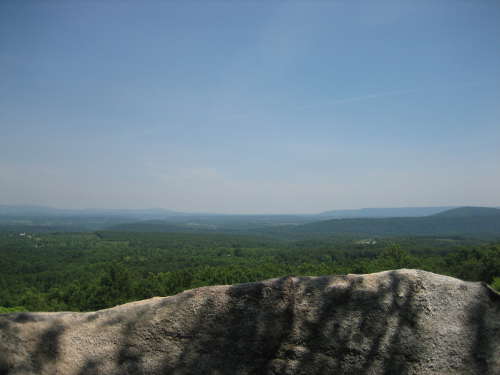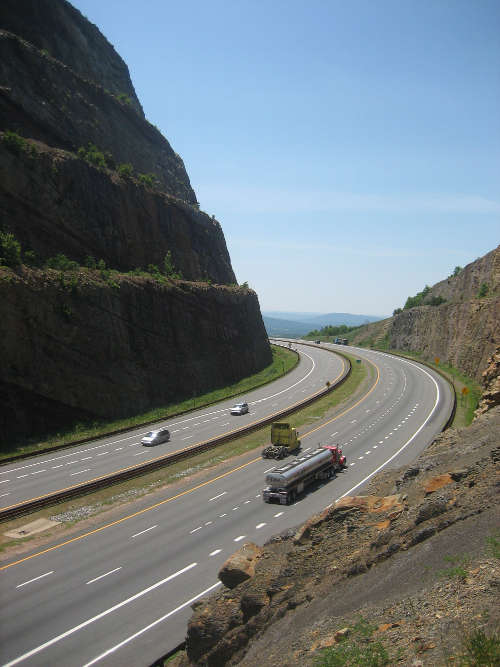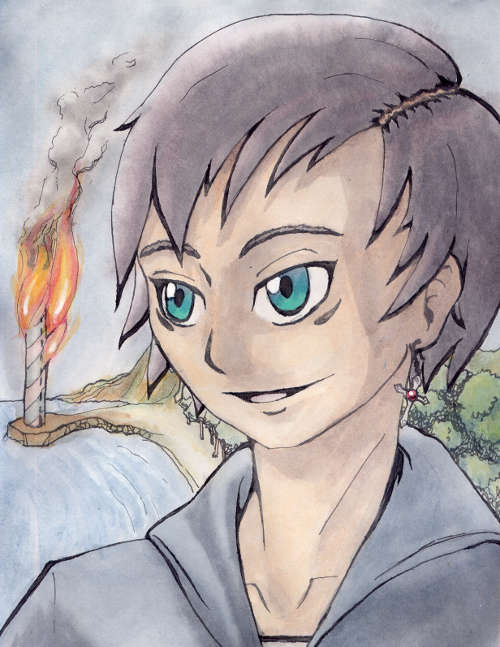 Location Taken: Sideling Hill, Maryland
Location Taken: Sideling Hill, Maryland
Time Taken: June 2007
You know, when I look back on some of my older photos, I can actually see how much of a novice I was.
Not that I can easily describe how I do that, mind you.
It’s something to do with choice of composition and lighting. And, most importantly, lack of a true focal point. The best images have edges and lines hidden within them that draw the eye around in certain patterns. This implied motion actually adds a lot of dynamics to a piece of art, giving just a bit of life to a still image.
Focal points are one of the key aspects of this type of movement. These are spots where multiple composition lines converge. This, of course, means you want something important at that point, one of the key elements of whatever idea or concept you’re trying to get across, from the saucy expression of an eye on a drawing of a handsome pirate to a compass resting on a map in an image of an explorer’s desk.
This piece, alas, has no true focal point. The composition lines all run largely parallel to one another, going along the edges of the ridgelines. There’s also secondary lines of eye motion going perpendicular to the primary lines, which is what you follow as you hop from one ridge to the next as you figure out the perspective of the piece. The shadows on the rock in front actually don’t add any extra lines, believe it or not. They actually detract from the piece, making the rock in front less interesting than it would be in full sunlight.
All these parallel lines mean that your eye either runs off the page or sits still due to lack of interesting things to move to. It’s a good photo of the low ridges of the Appalachians, with bonus rock in front. But it is not a dynamic photo.
The easiest way to fix it, of course, would be to add more lines in other directions. Get some sort of corner in there, and you’ve got an instant focus point. Perhaps not an interesting one, but still, a focus points. And there are no lines at all in all that clear blue sky. What wisps of clouds are there aren’t strong enough to catch the eye. A cloudier day would be better, and a different time of day. These days I don’t even bother taking photos at high noon, not unless there’s something extraordinary. Light coming down from above makes the piece boring.
Perhaps that’s how you can get better as a photographer. Just take thousands of photos, thinking about composition and lighting and the like with every single one. Eventually it’ll sink in, and your pieces will be much better. Well, at least in average. Probability says everyone takes poor photos now and then. At least that also means even novices take amazing photos on occasion.
 Location Taken: Maryland Sheep and Wool Festival
Location Taken: Maryland Sheep and Wool Festival



